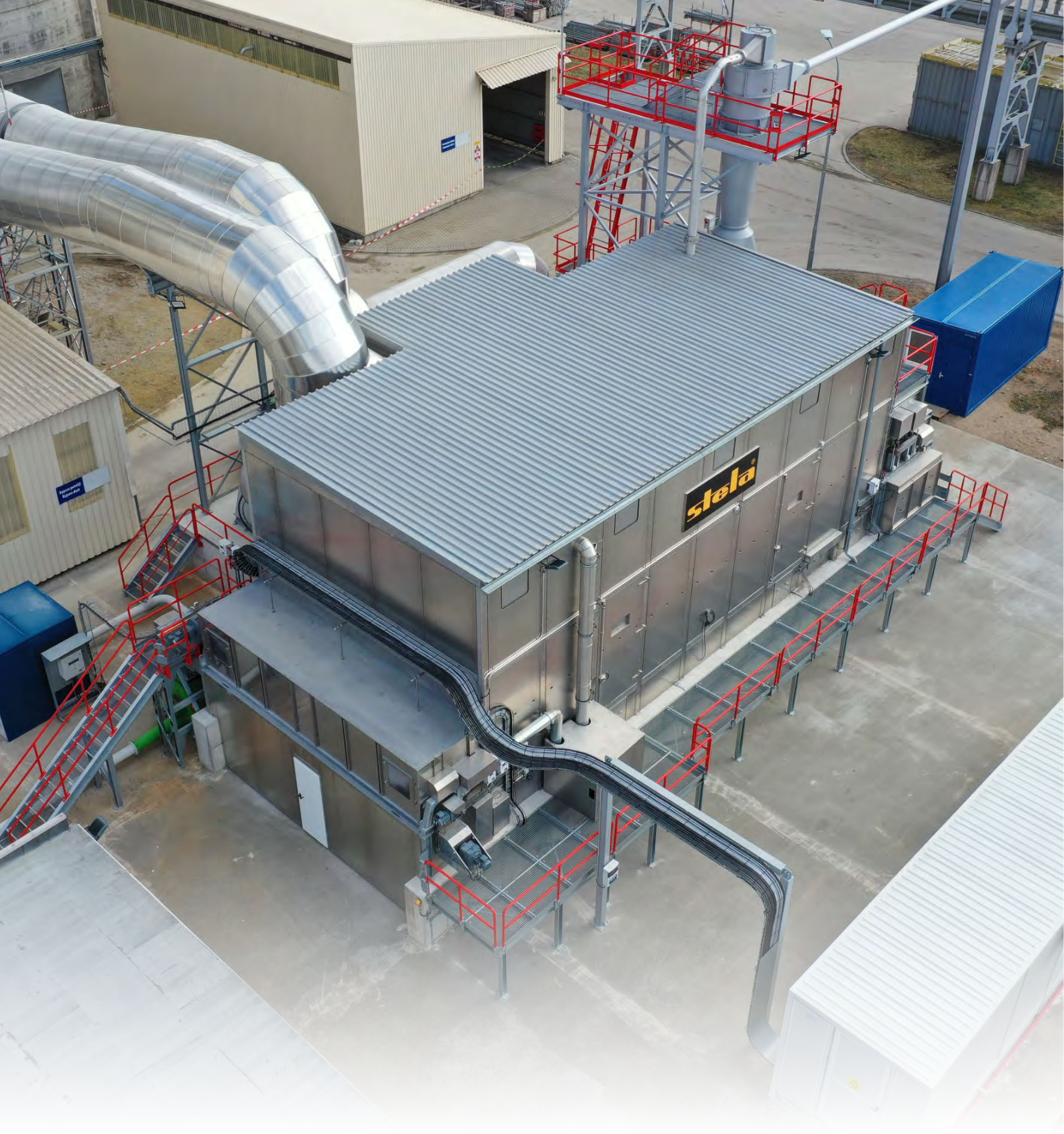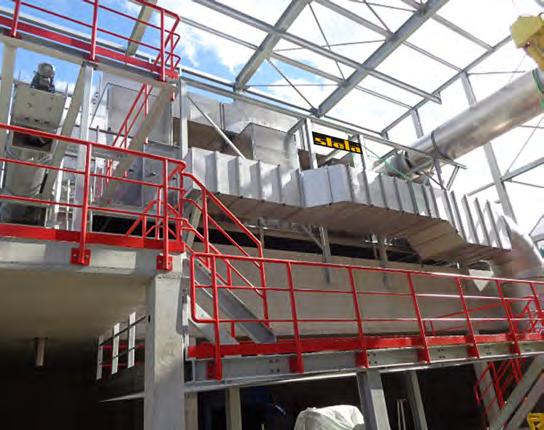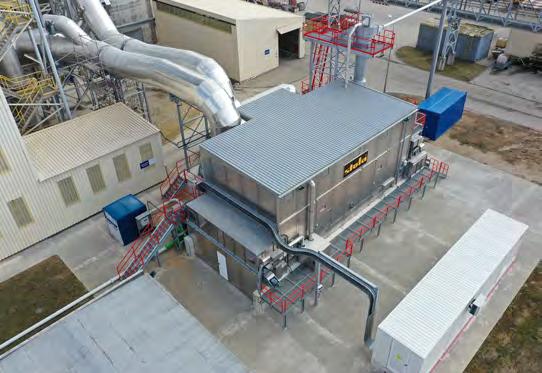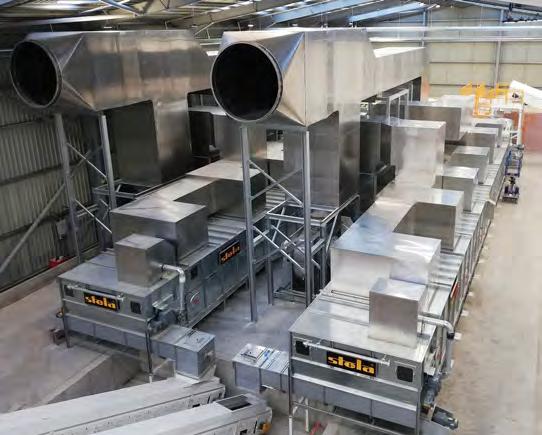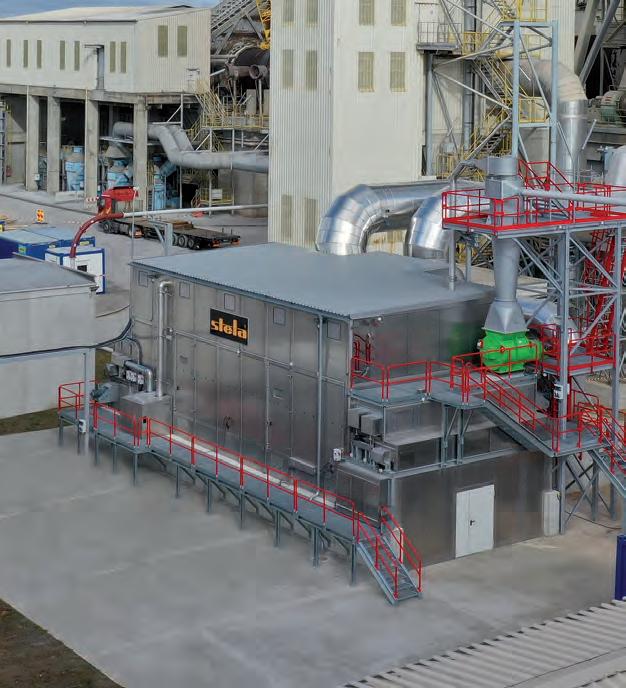垃圾替代燃料(RDF)的干燥工艺
2023-09-11
比较 未公开的德国水泥厂,出料量8.9 t/h, 15%-5%湿度 垃圾燃料(RDF)是去除了不可燃物部分的城市固废经过处理制备而成的。带式干燥机通常用于垃圾燃料(RDF)的生产过程中,在废料转化为燃料之前,通过带式干燥机对固废进行干燥,低温带式干燥机用于干燥垃圾燃料(RDF)的优点有很多: Refuse-derived fuel (RDF) is produced with municipal solid waste that has been processed to remove non-combustible materials. Belt dryers are commonly used in the RDF production process to dry the waste material before it is converted into fuel. Some of the advantages of low-temperature belt dryers for drying RDF are: 能效:与高温干燥机相比,低温带式干燥机的能耗明显较少,这意味着低温带干燥机式更节能,有助于降低运营成本。 Energy efficiency: Low-temperature belt dryers use significantly less energy compared to high-temperature dryers. This means that low-temperature dryers are more energy-efficient and can help reduce operating costs. 低粉尘排放:低温带式干燥机比高温干燥机产生更少的粉尘排放,在环保方面更友好。这是因为低温干燥过程中蒸发水分所需要的能耗较少,运行所需的燃料也较少,从而降低了粉尘排放。 Reduced emissions: Low-temperature belt dryers produce less emissions than high-temperature dryers, making them more environmentally friendly. This is because the low-temperature drying process produces less moisture and requires less fuel to operate, resulting in lower emissions. 高品质干料:低温带式干燥机通过防止干燥过程中物料因过热而分解,有助于保证垃圾燃料(RDF)最终干料的质量,这种方式将确保更加均匀一致的高品质干料。 High quality product: Low-temperature belt dryers help maintain the quality of the RDF product by preventing it from overheating and breaking down. This results in a more consistent and high-quality product. 安全性提升:比高温干燥机操作更安全,因为火灾和爆炸的风险更小,这也是因为在干燥过程中使用的较低温度的热风降低了着火和燃烧的风险。 Improved safety: Low-temperature belt dryers are safer to operate than high-temperature dryers, as there is less risk of fire and explosion. This is because the lower temperatures used in the drying process reduce the risk of ignition and combustion. 多场景应用:低温带式干燥机由于其温和的干燥过程,可应用于多种物料干燥,包括垃圾燃料(RDF)。这意味着相同的设备可用于多种应用场景,减少了对额外设备的需求,从而节省投资。 Versatility: Low-temperature belt dryers can be used for a wide range of materials, including RDF, due to their gentle drying process. This means that the same equipment can be used for multiple applications, reducing the need for additional equipment and thus saving money. 优势 拉脱维亚Broceni水泥厂,出料量7.7 t/h, 25%-3%湿度 总的来说,低温带式干燥机在干燥垃圾燃料(RDF)方面比高温干燥机具有这些优势:包括能效、低粉尘排放、高质量干料、提高安全性提升和多场景应用。 Overall, low-temperature belt dryers offer several advantages over high-temperature dryers for drying RDF, including energy efficiency, reduced emissions, high-quality product, improved safety, and versatility. 垃圾燃料(RDF)可替代煤炭和天然气等化石燃料,实现碳中和的水泥生产,而这些燃料都是水泥生产中传统主要能源,以下是垃圾燃料(RDF)在水泥生产中实现碳中和的一些方法: 替代燃料:垃圾燃料(RDF)可以用作水泥窑的替代燃料,取代一部分用于产生窑热的煤炭等化石燃料,通过减少煤炭等化石燃料的耗量和相应的二氧化碳排放量,减少了水泥生产过程的碳足迹。 Alternative fuel: RDF can be used as an alternative fuel in the cement kiln, replacing a portion of the fossil fuels used to generate heat. This reduces the carbon footprint of the cement production process by reducing the amount of fossil fuels burned and the associated CO2 emissions. 热能回收:通过利用熟料冷却过程中产生的窑头废热来提高垃圾燃料(RDF)的热能,既减少了对化石燃料的需求,又确保以高效和可持续的方式利用固废的热值。 Energy recovery: The energy content of RDF will be elevated by using excess heat generated during clinker cooling. This reduces the need for fossil fuels and ensures that the energy content of the waste material is utilised in an efficient and sustainable manner. 应用 英国Nawrocki造粒厂,出料量4.5 t/h, 20%-10%湿度 减少碳足迹:在水泥生产中使用垃圾燃料(RDF)可以显著减少水泥生产过程的碳足迹。通过用垃圾燃料(RDF)取代煤炭等化石燃料,可以大大减少与水泥生产相关的碳排放,有助于减轻水泥行业对环境的影响。 Reduced carbon footprint: The use of RDF in cement production can significantly reduce the carbon footprint of the cement manufacturing process. By replacing fossil fuels with RDF, the emissions associated with cement production can be greatly reduced, helping to mitigate the impact of the cement industry on the environment. 能效:垃圾燃料(RDF)可以通过提供更高效和可持续的替代燃料来帮助提高水泥生产的能效,这有助于降低能耗以及成本,并提高水泥生产过程的整体可持续发展。 Energy efficiency: RDF can help to improve the energy efficiency of cement production by providing a more efficient and sustainable source of fuel. This can help to reduce energy consumption, lower costs, and improve the overall sustainability of the cement production process. 固废处置:在水泥生产中使用垃圾燃料(RDF)可以为可能最终被填埋的废料提供一个可持续的处置出口,从而有助于解决日益严重的固废处置问题。这有助于减少固废量,并将固废处置对环境的影响降至最低。 Waste management: The use of RDF in cement production can help to address the growing problem of waste management by providing a sustainable outlet for waste materials that might otherwise end up in landfills. This can help to reduce the amount of waste generated and minimise the environmental impact of waste disposal. 法规和激励措施:世界各国政府越来越多地实施法规和激励政策,鼓励在水泥生产中使用包括垃圾燃料(RDF)在内的替代燃料,这可能会推动RDF在水泥行业的应用,并进一步加速向更可持续的能源形式的过渡。 Regulations and incentives: Governments around the world are increasingly implementing regulations and incentives to encourage the use of alternative fuels, including RDF, in cement production. This is likely to drive the adoption of RDF in the cement industry and further accelerate the transition to more sustainable forms of energy. 总结 总体而言,垃圾燃料(RDF)的使用可能会对未来的水泥生产产生重大影响,有助于提高水泥生产过程的可持续性和效率,同时减少水泥行业对环境的影响。 Overall, the use of RDF is likely to have a significant impact on cement production in the future, helping to improve the sustainability and efficiency of the cement manufacturing process while reducing the industry’s impact on the environment. source and copyright: World Cement Magazine, August 2023